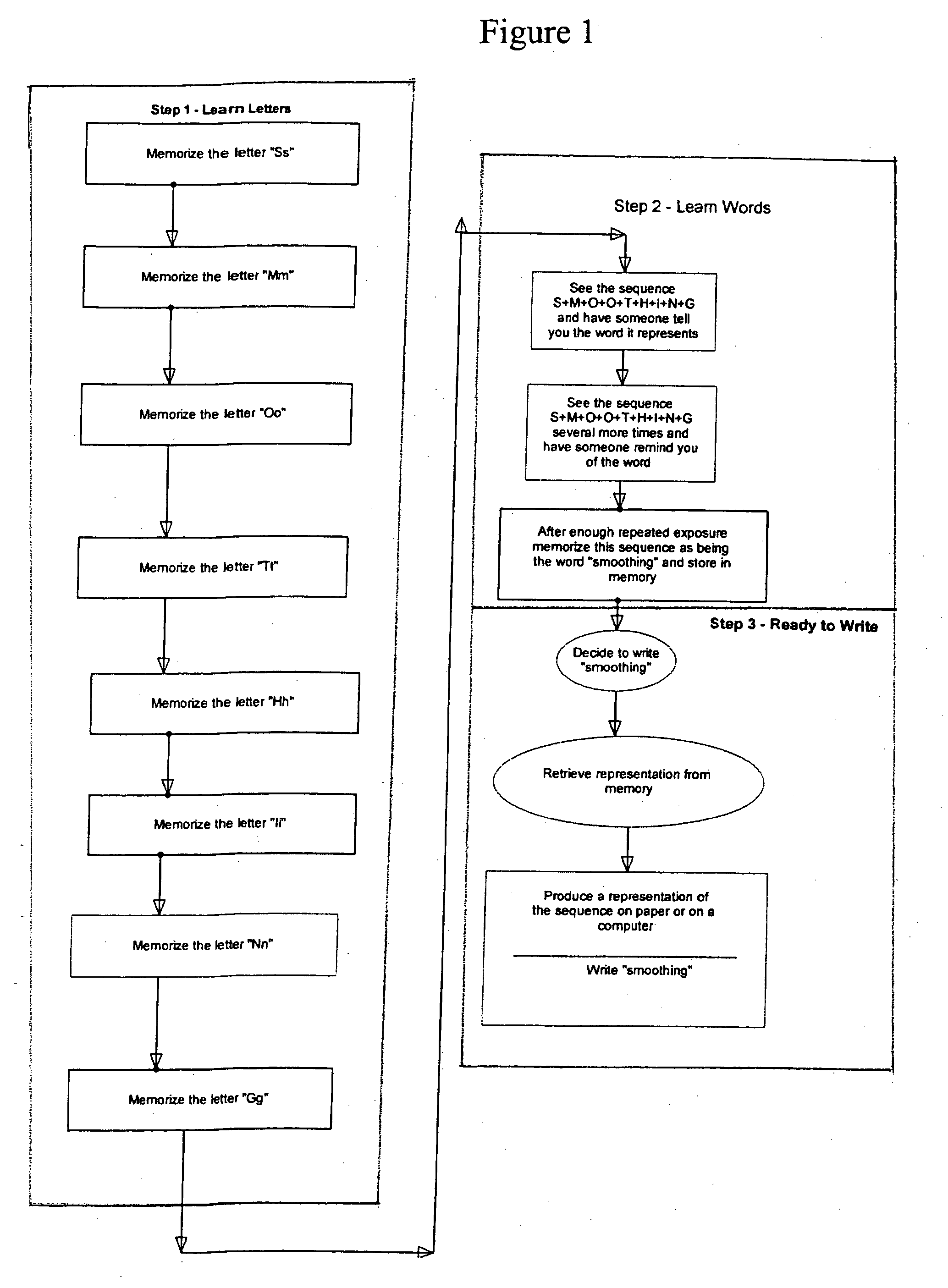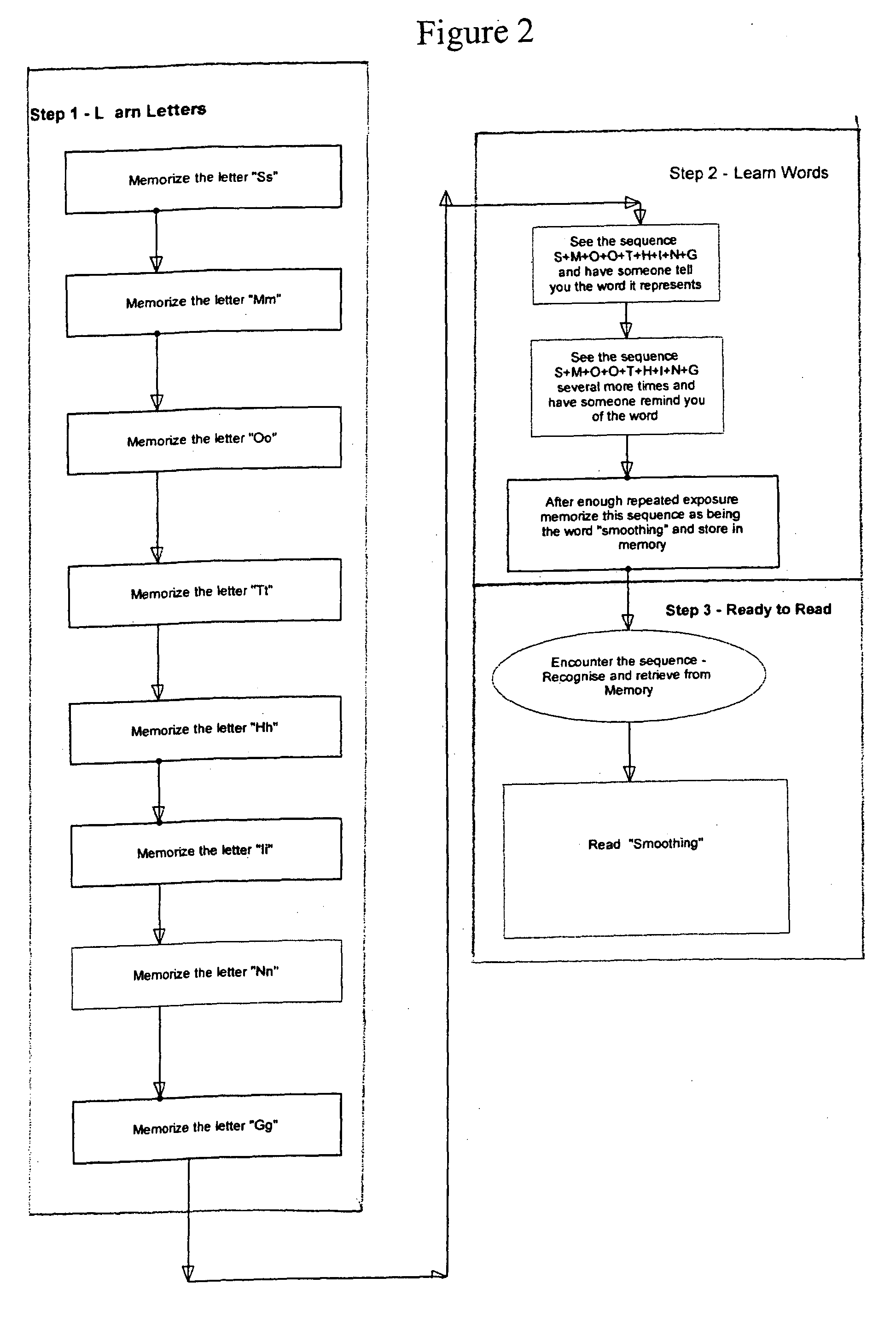Method and system for facilitating reading and writing without literacy
a technology of literacy and facilitation, applied in the field of communication medium and communication method, can solve the problems of failure to achieve the effect of facilitating reading and writing, reducing the cost of literacy per capita, and demonstrating the failure of these efforts
- Summary
- Abstract
- Description
- Claims
- Application Information
AI Technical Summary
Benefits of technology
Problems solved by technology
Method used
Image
Examples
Embodiment Construction
[0035] One of the most important technologies in existence is the companion technologies of writing and reading. An example of such a companion technology may include means of representing language by mute means and means of reading. Such mute means and means of reading may be exemplified by the perception of language by deaf means. These technologies have been significantly improved over the years with the addition of publishing means. Examples of publishing means may include the presentation of language in a form suitable for reading. The phrase “silent communication” is meant in this application to mean any task involving writing or publishing.
[0036] Unless specifically defined, all technical and scientific terms used herein have the same meaning as commonly understood by a skilled artisan of communications, linguistics, psychology, and / or computer science.
[0037] As noted in the Background Section above, increased efforts to teach reading, publishing and writing of existing lan...
PUM
 Login to View More
Login to View More Abstract
Description
Claims
Application Information
 Login to View More
Login to View More - R&D
- Intellectual Property
- Life Sciences
- Materials
- Tech Scout
- Unparalleled Data Quality
- Higher Quality Content
- 60% Fewer Hallucinations
Browse by: Latest US Patents, China's latest patents, Technical Efficacy Thesaurus, Application Domain, Technology Topic, Popular Technical Reports.
© 2025 PatSnap. All rights reserved.Legal|Privacy policy|Modern Slavery Act Transparency Statement|Sitemap|About US| Contact US: help@patsnap.com



